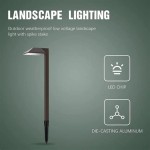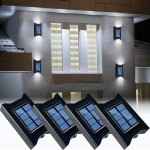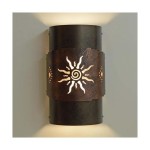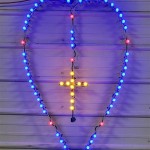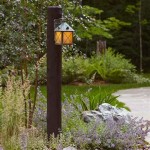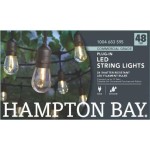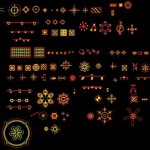```html
Outdoor Lighting and the Night Sky Tonight
The allure of the night sky has captivated humanity for millennia. From ancient navigators charting courses by the stars to modern astronomers probing the universe's depths, the celestial panorama has served as a source of wonder, inspiration, and knowledge. However, the ability to clearly observe this spectacle is increasingly threatened by a phenomenon known as light pollution. This article will explore the impact of outdoor lighting on the night sky, discussing its causes, consequences, and potential mitigation strategies.
Light pollution stems from the excessive or misdirected use of artificial light. While outdoor lighting serves legitimate purposes related to safety, security, and aesthetics, its implementation often overlooks the profound effects on the natural environment, including the visibility of stars and other celestial objects. Understanding the nature of light pollution and its sources is crucial for developing effective solutions.
Understanding the Sources of Light Pollution
Light pollution is not a single, monolithic problem but rather a collection of related issues, each contributing to the degradation of the night sky. Identifying the primary sources of light pollution is the first step towards reducing its impact.
One of the most significant contributors is
glare
. This occurs when excessive brightness causes discomfort or disability, impairing visual performance. Unshielded or poorly designed luminaires emit light directly into the eyes, creating glare and making it difficult to see properly. This is often associated with bright, unshielded streetlights or floodlights.Another important source is
skyglow
. This refers to the brightening of the night sky over inhabited areas. Light emitted upwards from poorly shielded or inefficient outdoor lighting scatters off atmospheric particles, creating a diffuse glow that washes out the fainter stars and constellations. Skyglow can extend for hundreds of kilometers, affecting even relatively remote areas.Light trespass
is another form of light pollution, occurring when unwanted light shines into areas where it is not needed or intended, such as bedrooms or neighboring properties. This can disrupt sleep patterns, reduce privacy, and create nuisance for residents. Poorly aimed or excessively bright outdoor lighting is often the culprit.Finally,
clutter
refers to excessive groupings of bright, often uncoordinated, light sources. This can create confusion, distract drivers, and contribute to visual discomfort. Overly lit commercial areas or brightly lit advertising signs are examples of light clutter.The Consequences of Light Pollution
The effects of light pollution extend far beyond simply obscuring the stars. They have significant implications for human health, wildlife, and energy consumption.
Impacts on Human Health:
Studies have shown that exposure to artificial light at night can disrupt the body's natural circadian rhythms, affecting sleep patterns, hormone production, and overall health. Disruption of melatonin production, a hormone that regulates sleep and has antioxidant properties, has been linked to an increased risk of certain cancers, obesity, and other health problems. Furthermore, glare can cause eye strain, headaches, and reduced visual acuity, particularly in older adults.Ecological Impacts:
Light pollution can have devastating effects on wildlife. Many species rely on natural darkness for navigation, foraging, reproduction, and protection from predators. Artificial light can disorient nocturnal animals, disrupt their migration patterns, and interfere with their ability to find food and mates. For example, sea turtles are attracted to artificial light on beaches, leading them away from the ocean and exposing them to predators or dehydration. Similarly, migratory birds can be disoriented by city lights, causing them to collide with buildings or expend unnecessary energy.Astronomical Impacts:
The most obvious consequence of light pollution is the obscuration of the night sky. Skyglow makes it difficult to see faint stars, galaxies, and nebulae, hindering both amateur and professional astronomical observations. In heavily light-polluted areas, only the brightest stars are visible, and the Milky Way, a prominent feature of the night sky in dark locations, is completely invisible. This loss of access to the night sky has cultural and educational implications, depriving people of the opportunity to connect with the universe and learn about astronomy.Economic Impacts:
Inefficient outdoor lighting wastes energy and contributes to greenhouse gas emissions. Poorly shielded luminaires emit light upwards, where it serves no useful purpose, squandering energy and increasing electricity costs. Reducing light pollution can save money and reduce our environmental footprint. Properly designed and installed lighting systems can provide adequate illumination while minimizing light trespass and skyglow.Mitigation Strategies: Protecting the Night Sky
Addressing light pollution requires a multi-faceted approach, involving changes in lighting technology, regulations, and public awareness. Fortunately, there are numerous strategies that can be implemented to reduce light pollution and restore the beauty of the night sky.
Shielding:
The most effective way to reduce light pollution is to use fully shielded luminaires. These luminaires direct light downwards, preventing it from shining upwards or horizontally. Full shielding minimizes skyglow and light trespass, directing light only where it is needed and reducing glare. Choosing luminaires with a "full cutoff" design is crucial.Color Temperature:
The color temperature of outdoor lighting can also affect light pollution. Blue-rich light scatters more readily in the atmosphere than other colors, contributing to skyglow. Using warmer-colored light sources with a color temperature of 3000 Kelvin or less can significantly reduce the amount of skyglow. Many municipalities are now adopting regulations that encourage or require the use of warmer-colored lighting for outdoor applications. Amber or narrow-spectrum amber LEDs are particularly effective at minimizing light pollution while providing adequate illumination for safety and security.Dimming and Controls:
Implementing dimming controls and motion sensors can further reduce light pollution and energy consumption. Dimming systems allow outdoor lighting to be automatically reduced during off-peak hours, while motion sensors activate lights only when needed. These technologies can significantly reduce the amount of light emitted into the environment without compromising safety or security. For example, streetlights can be dimmed after midnight when traffic levels are low, and parking lot lights can be activated only when vehicles or pedestrians are present.Lighting Curfews and Ordinances:
Many communities are adopting lighting curfews and ordinances to regulate the use of outdoor lighting. These regulations typically specify requirements for shielding, color temperature, and maximum light levels. They may also include provisions for lighting curfews, restricting the use of outdoor lighting during certain hours of the night. Such measures can be effective in reducing light pollution, but require enforcement to be successful.Public Education and Awareness:
Raising public awareness about the impacts of light pollution is essential for promoting responsible lighting practices. Educating homeowners, businesses, and municipalities about the benefits of proper lighting can encourage them to adopt more sustainable approaches. Educational programs can highlight the importance of shielding, color temperature, and dimming controls, as well as the negative consequences of excessive or misdirected lighting. Citizen science initiatives, such as light-metering campaigns, can also help to raise awareness and gather data on light pollution levels.By implementing these strategies, communities can reduce light pollution and protect the night sky for future generations. The preservation of darkness is not simply about preserving the ability to see stars; it is about protecting human health, wildlife, and the environment.
```
What S That Line Of Lights In The Night Sky

Bright Lights In The Evening Sky Spot Venus Jupiter Tonight Space

Why You May See Strange Bright Lights In The San Francisco Bay Area Sky Tonight

Success Stories Darksky International

Viewers See Line Of Lights Moving Across Central Pennsylvania Sky

Flying Lines Of Lights In The Night Sky Here S What Elon Musk Has To Do With Them Ctv News

Night Skies Grand Canyon National Park U S Service

Why Is The Night Sky Turning Red Discover

Captures Strange Lights Moving Across The Sky In Salford Manchester Evening News

What Were Those Lights In The Sky Over Southeastern Pennsylvania
